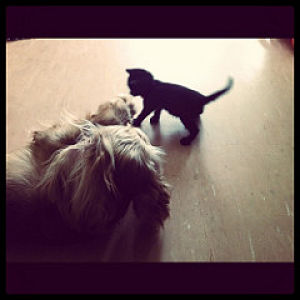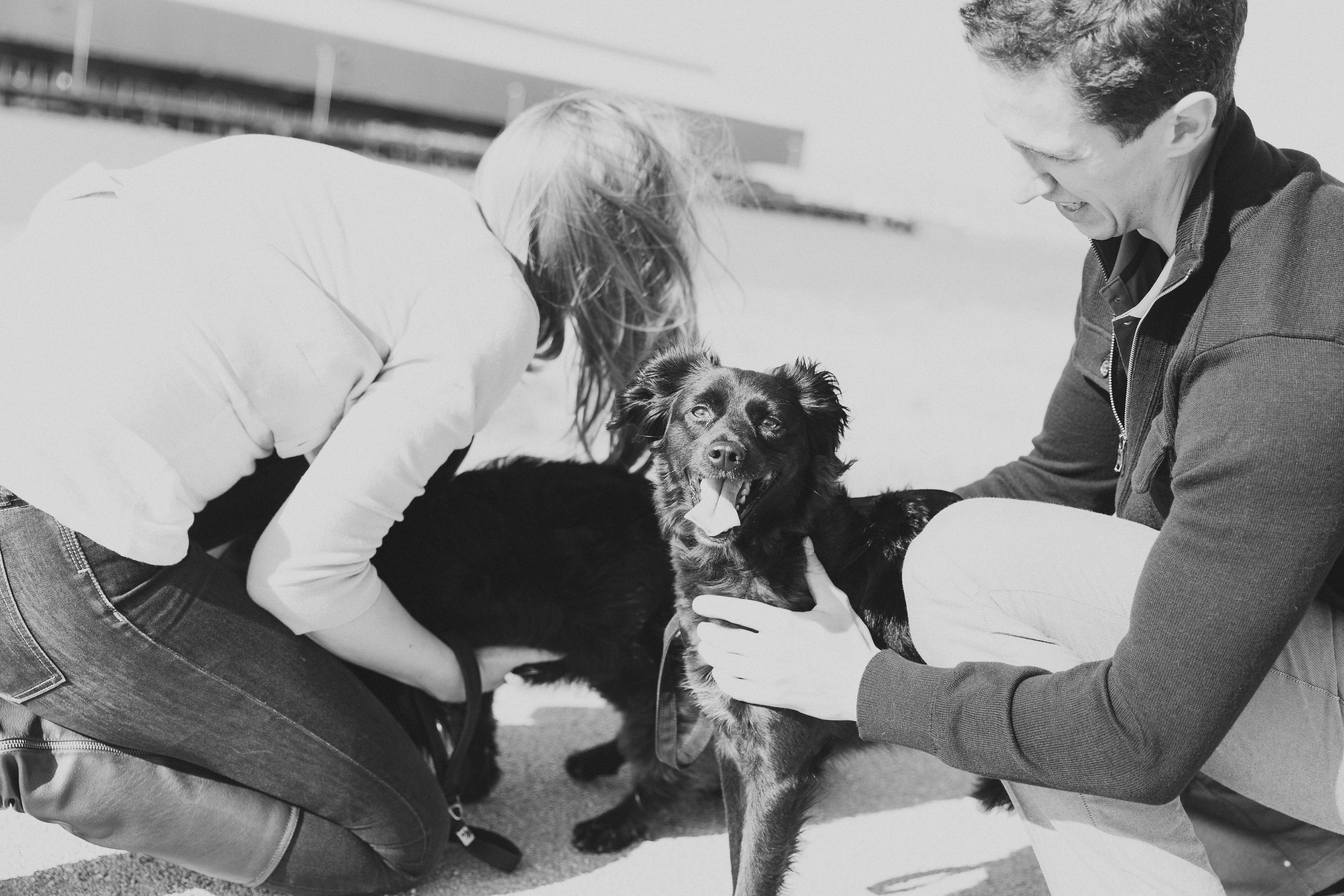Prey Drive. Don’t underestimate it! Most any dog is programmed to chase, at some base level. Address this first before you introduce any dog or puppy to a cat or kitten. Simply wear the pup out. Laser toys, tennis balls, and a good run are all helpful. Additionally, my puppy had no stuffed squeaky toys for a month after the kittens arrived, to avoid any potential confusion as to what was shreddable.
Basic Commands. It is very helpful if your puppy already knows how to “sit” and “stay”. It is important for him to understand what you expect from him while in proximity to the feline species. Just before the cat starts to run is a good time to reinforce the “sit/stay” commands with awesome treats. Thus the instinctual chase mode is tempered. It may take some time to accomplish the desired results with an active pup, but consistency pays off.
“It may take some time to accomplish the desired results with an active pup, but consistency pays off.”
Food Control. This technique is especially useful when introducing a pup to a cat. My puppy learned very early on that the kittens had unfettered access to his food bowl, and he was not allowed to stop them. Once his food bowl was filled, he had to “sit” and “wait” one full minute before being released to eat. Every subsequent dog entering the household went through the same process. Why? The food bowl is a prime place for accidents. The pup may attack to “protect” his food. By allowing the cat to approach his food first, he learns the cat has a higher ranking in the pack than him, so the drive to chase the cat gradually decreases. Foreign outside cats will still get chased, just not your puppy’s cats!
Dogs and cats can be friends, but even friends have disagreements. These are the fundamentals that helped me the most with my canine and feline introductions. Remember to remain calm and confident during the process, knowing the occasional panic moment is inevitable but the payoff is huge!

Do you have any cat introduction advice? We would love to hear it! Comment below.
